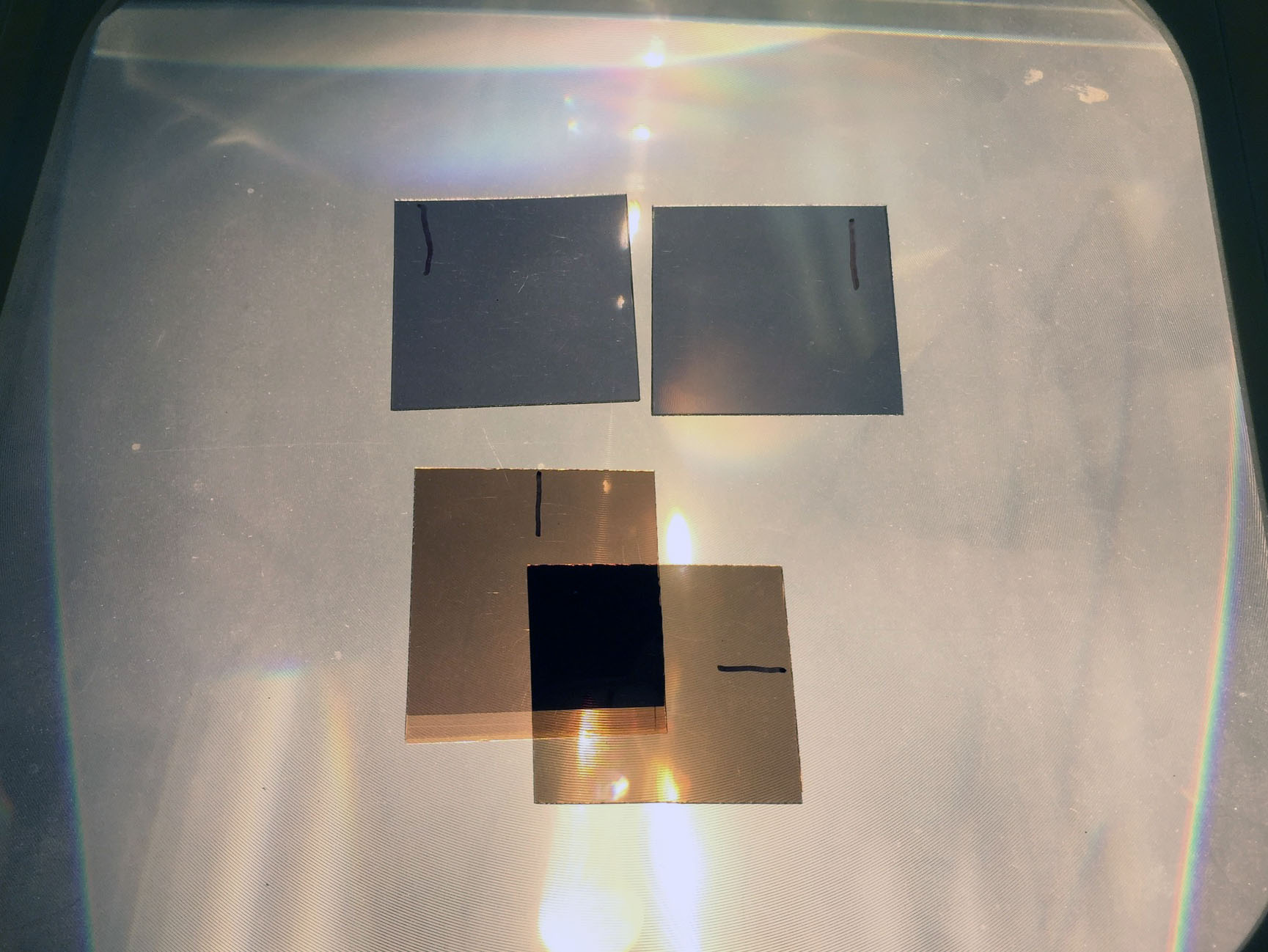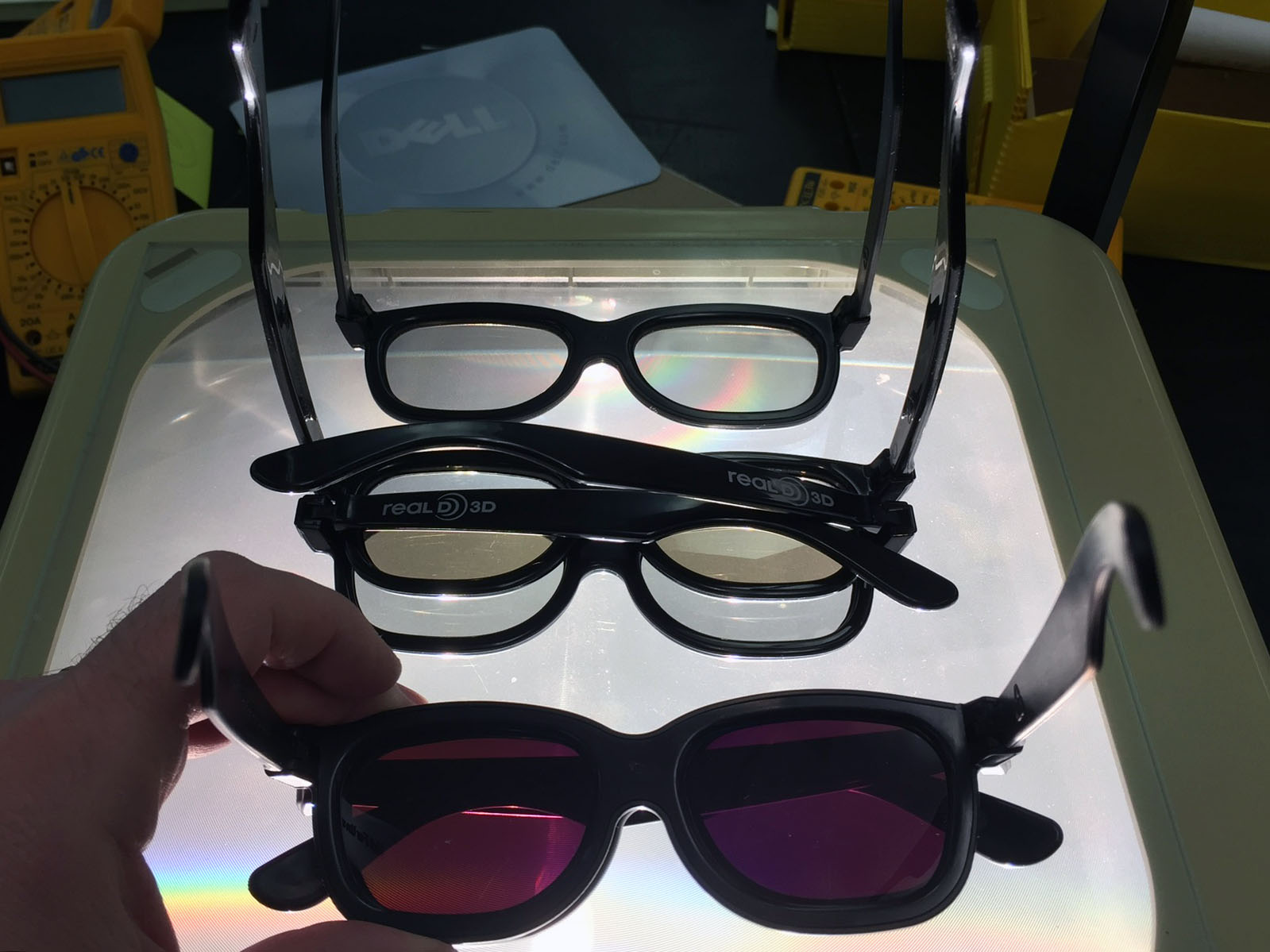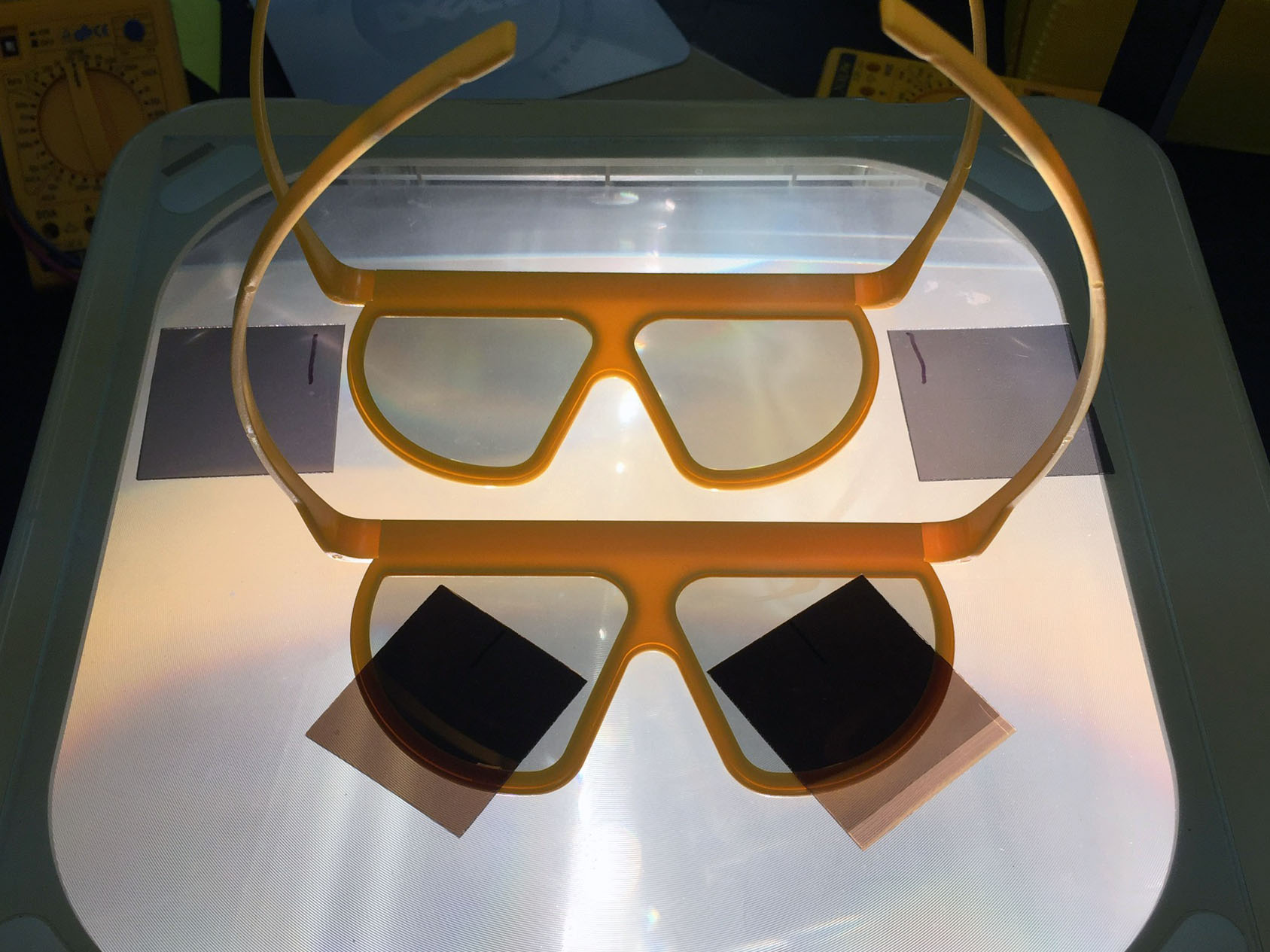All sorts of fun with polarized light.
We have an assortment of linearly polarized plastic pieces and glasses. Jeff has his own supply of circular polarized glasses, and will be happy to share them with you.
- Linear Polarized Material: Small pieces of polarizing material. It helps to draw a line on each piece showing the direction of polarization.
- Overlap the pieces with the lines (polarization direction) parallel, and slowly rotate one piece 90° until the overlap is opaque (Fig. 1). Oohh…
- Linear Polarized Glasses: 3-D movies regained popularity in the 1980's when movie studios switched from the headache-inducing red & blue anaglyph glasses (ask Jeff - he has some!) to linearly polarized glasses. These glasses came in cardboard frames, and then later in a stylish yellow frame (probably to keep people from swiping them and using them – with great harm – as sunglasses).
- Place the 3-D glasses face down on the overhead, and place a piece of linearly polarized plastic on each lens. Both small pieces should be aligned in the same direction. Rotate both pieces the same way until one lens appears dark (Fig. 3); this shows that the polarization direction is different for each lens. Now rotate the other piece so that both are dark (Fig. 4). Ahh…
- The direction of polarization was different for each lens in the glasses. If you removed the glasses while in the theater, you would see a double-image, and one image was shifted at a slight angle to the other. Each eye would only see the image that matched the polarization direction; your brain puts the images together and adds a sense of depth.
- Ask students how they know if they're wearing polarized sunglasses? Rock your head from ear to ear while looking at the blue sky (maximum polarization is 90° from the Sun); the reflection in a building or car window; or the LCD display on the gas pumps at the Mobil and Sunoco station in town. If the brightness changes from light to dark as you rock your head, then you're wearing polarized sunglasses. (The LCD display on the gas pumps will turn completely black). This can also work with modern computer displays, but the effect on an iPhone isn't as dramatic as it used to be with older models.
- The plastic frames were popular at Disney World around 2005. If you want a real treat, ask Jeff to tell you his story about bringing a date to see the 1982 release of "Friday the 13th, Part III" in glorious 3-D!
- Circular Polarized Glasses: Current 3D movies are viewed with glasses that are circularly polarized. Conceptually, the effect of these glasses is harder to understand, but cool effects can still be observed. As explained in this Wikipedia article, this method allows people to see the 3D effect even if they tilt their head. The special movie projector in the theater switches between a left-eye frame and right-eye frame 144 times per second. A polarizer in front of the projector alternately polarizes each frame; the frames are circularly polarized clockwise for the right eye and counter-clockwise for the left eye.
- You'll need two pairs of circularly polarized glasses; nothing will happen if you use the glasses with a piece of linearly polarized material
- Place one pair face down on the overhead projector (Fig. 4, top). Place a second pair face down on top; all you'll see is a slight decrease in the light intensity (Fig. 4, middle). Now flip the top pair around so that it faces up; since you now have each side with a clockwise and counter-clockwise lens, the light intensity is significantly diminished (Fig. 4, bottom). Unhh…
LDL-A4 and LDL-A5. You'll also need an overhead projector and screen. Also ask Jeff to dip into his personal stock of polarizing goodies.

Fig. 1. Linearly polarized material; note line drawn on each piece
to show the direction of polarization

Fig. 2. Circular polarized glasses: (top) Single pair; (middle) Two pairs,
aligned in the same orientation (both facing downward); (bottom) Two
pairs in opposite directions (bottom pair facing down, top pair facing up)

Fig. 3. Linear polarized glasses; note orientation of
polarized material on bottom pair

Fig. 4. Note the orientation of polarization of each lens